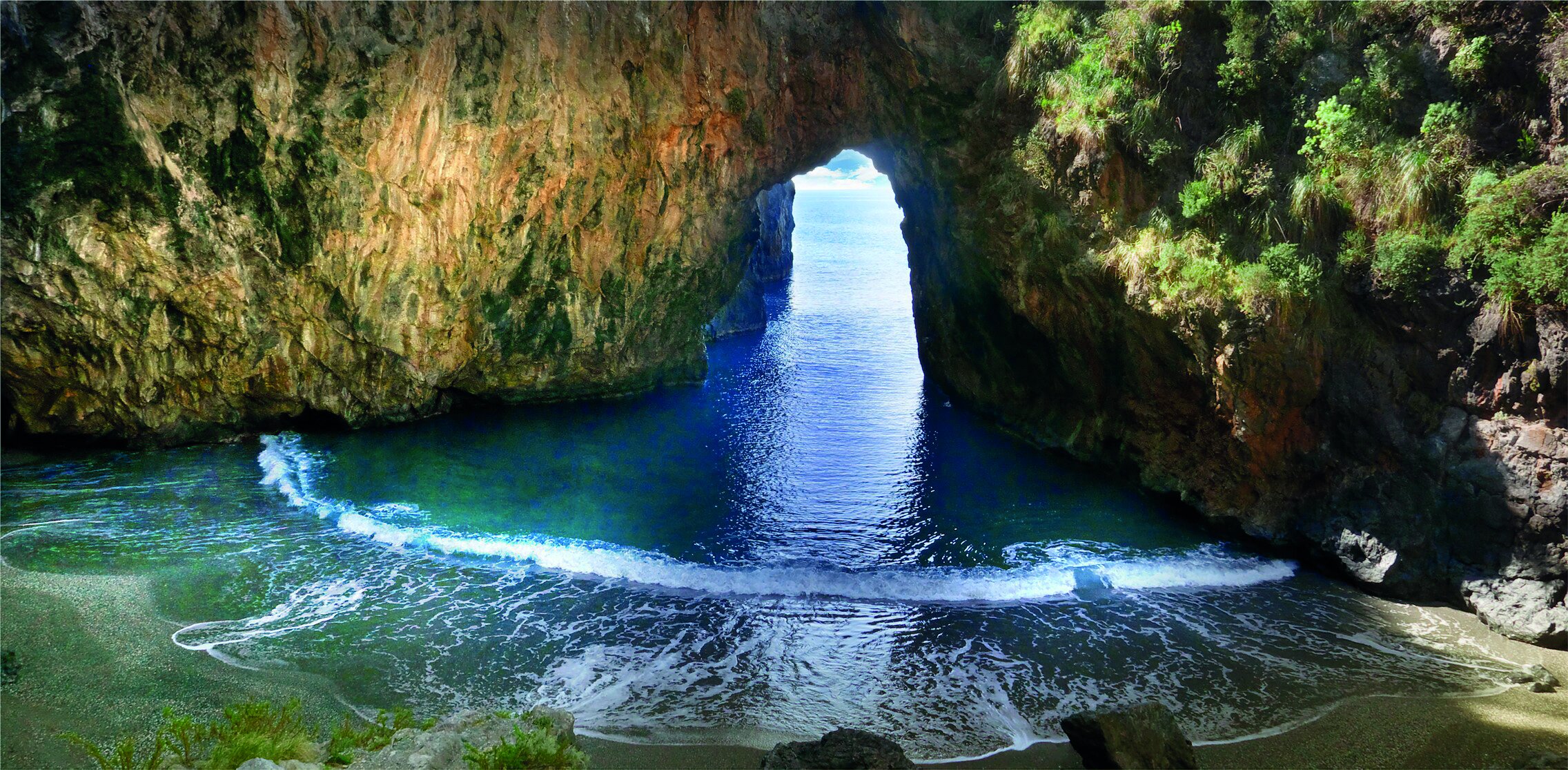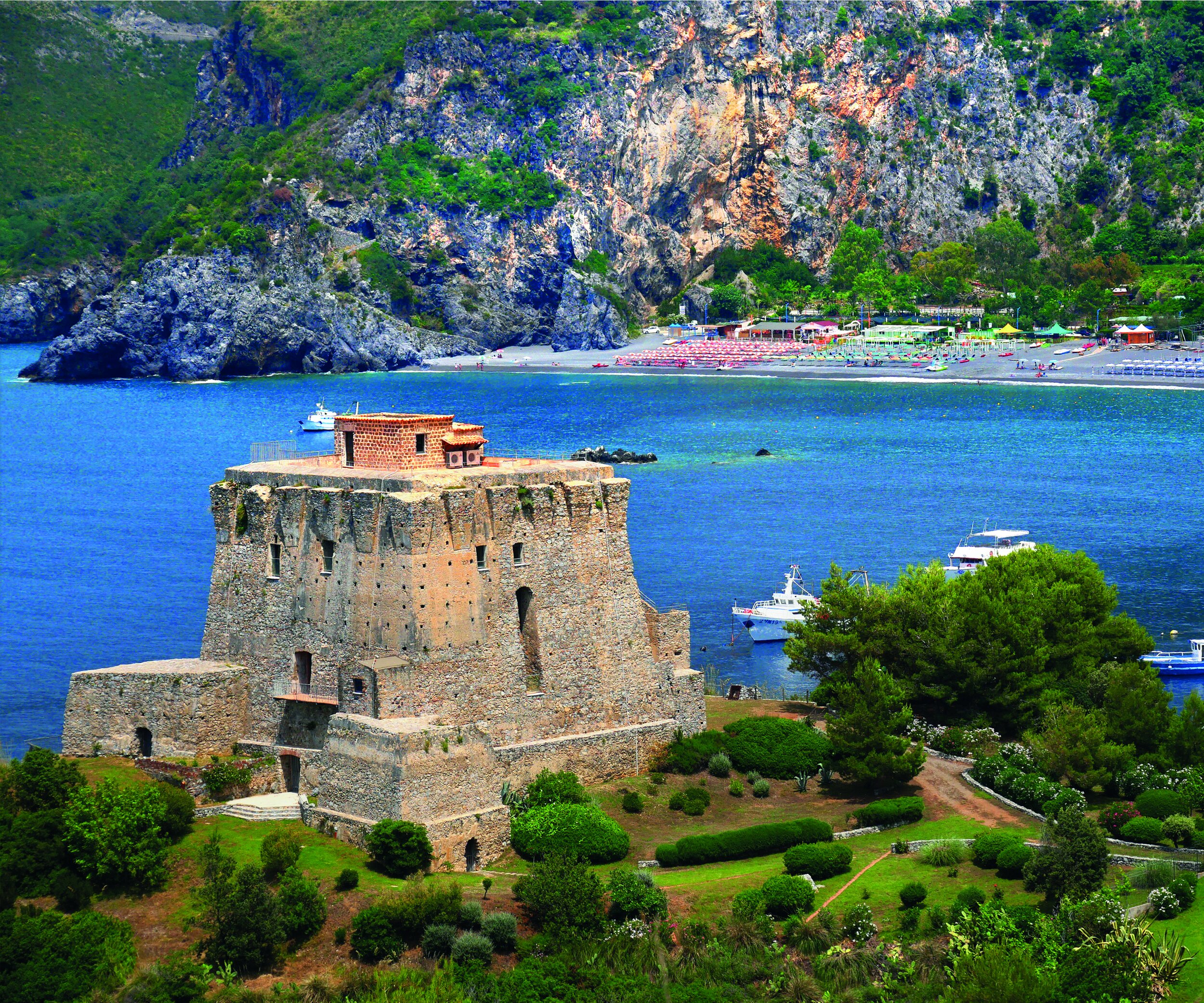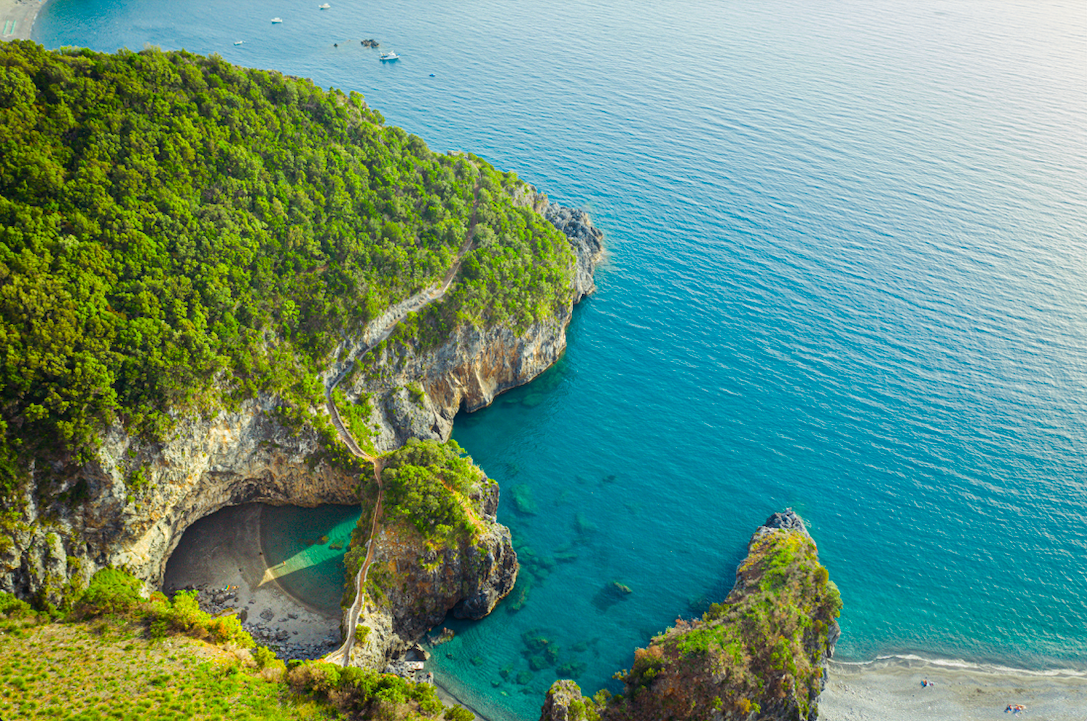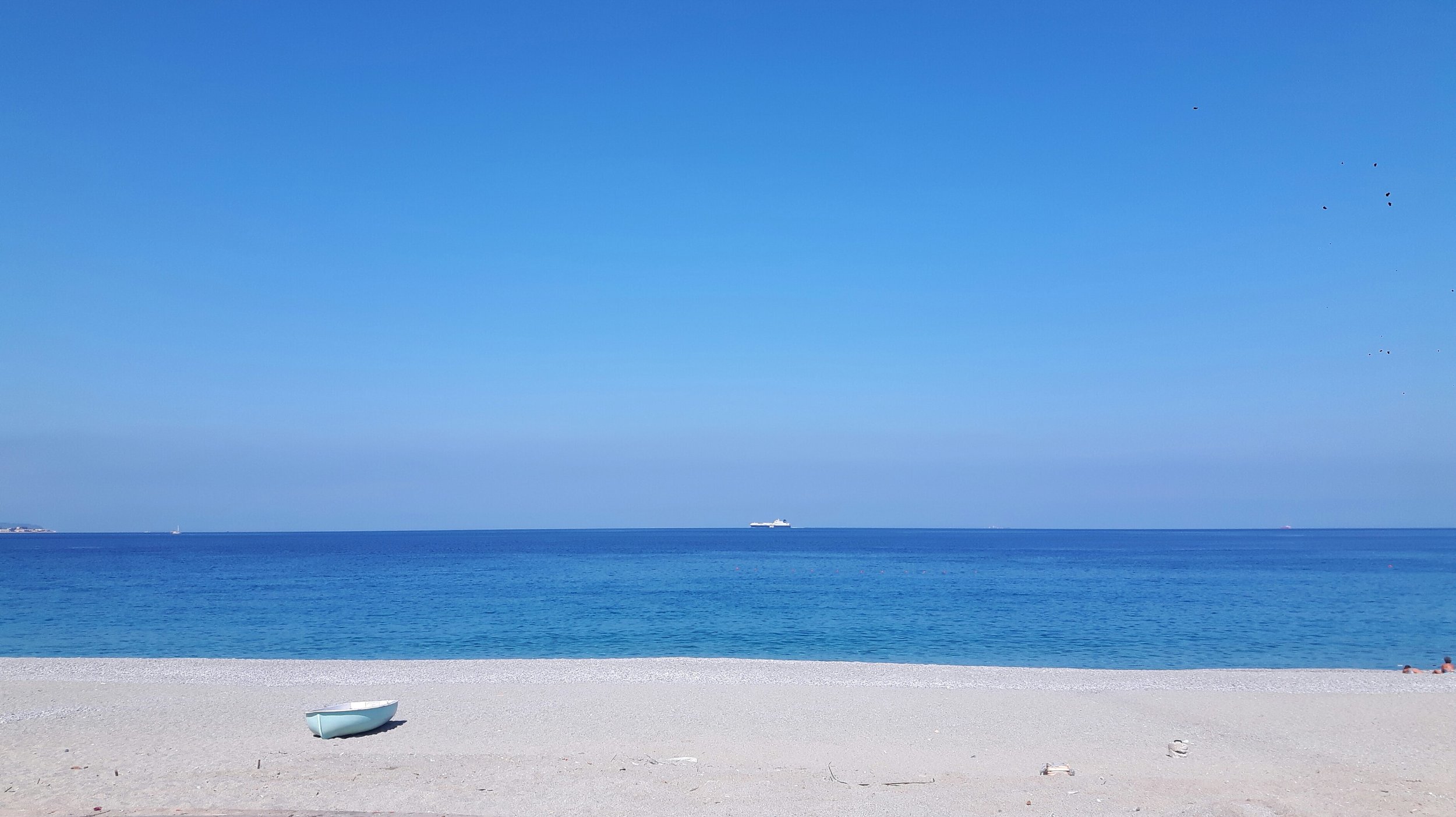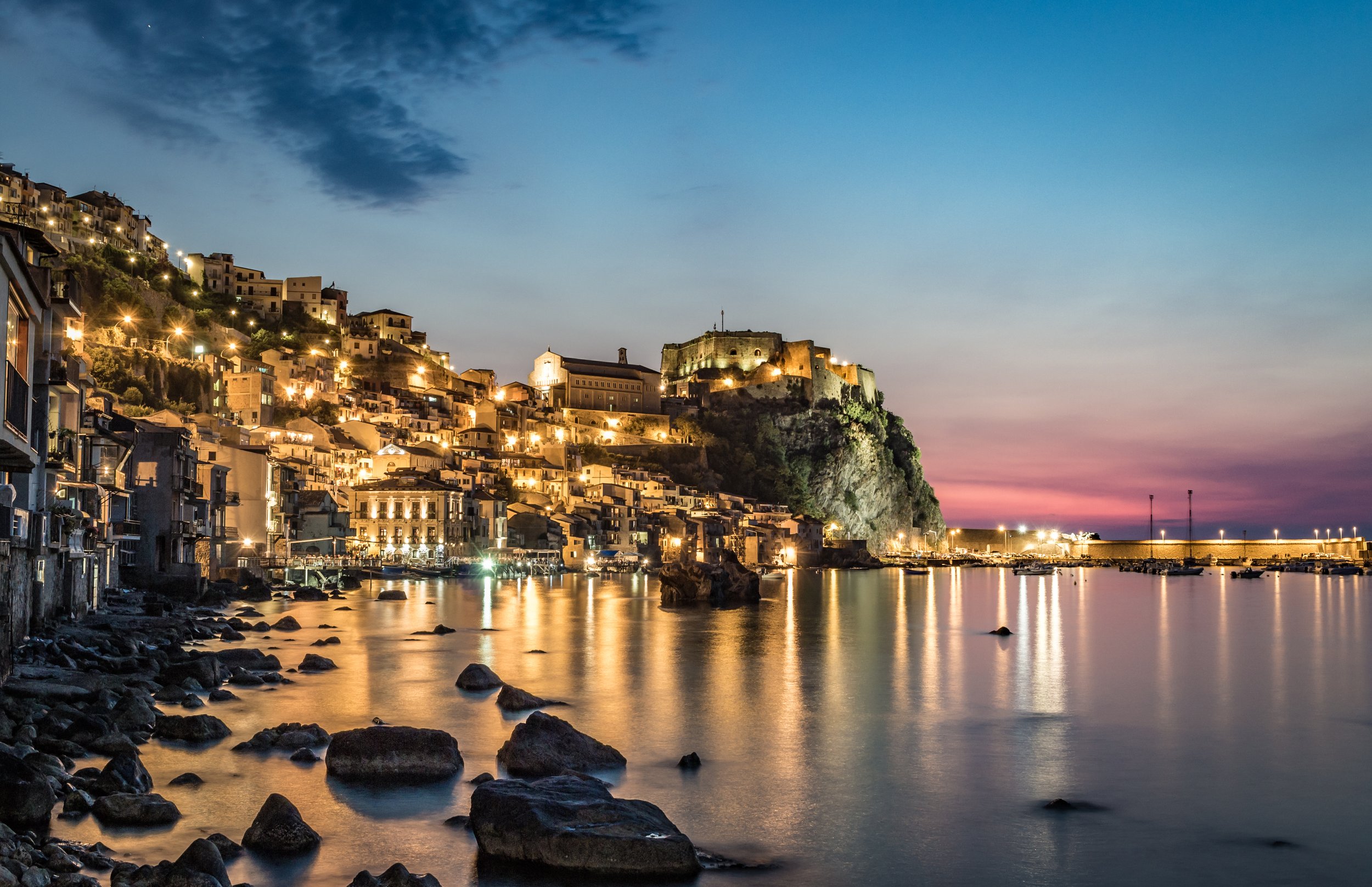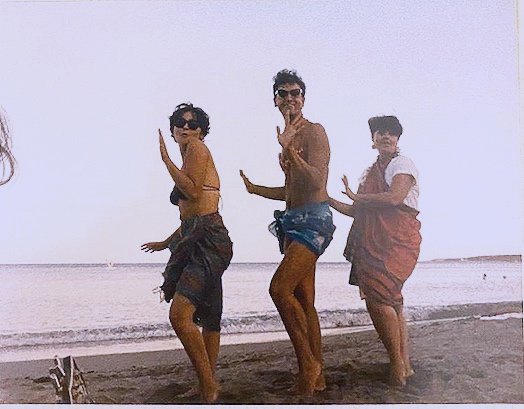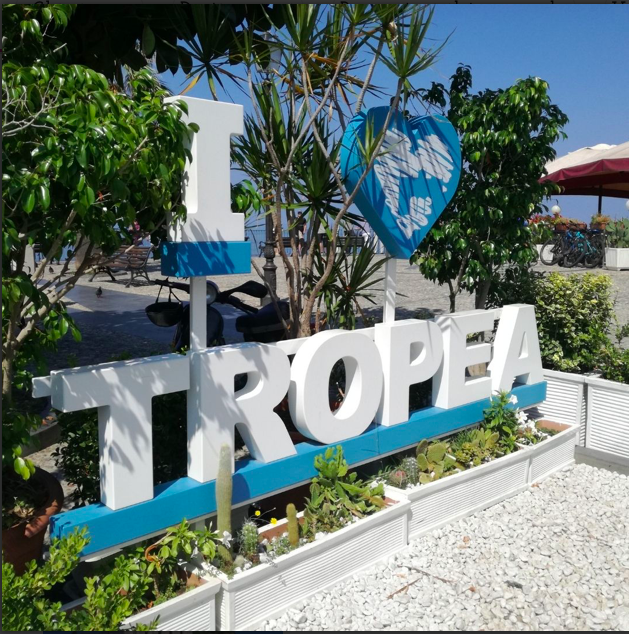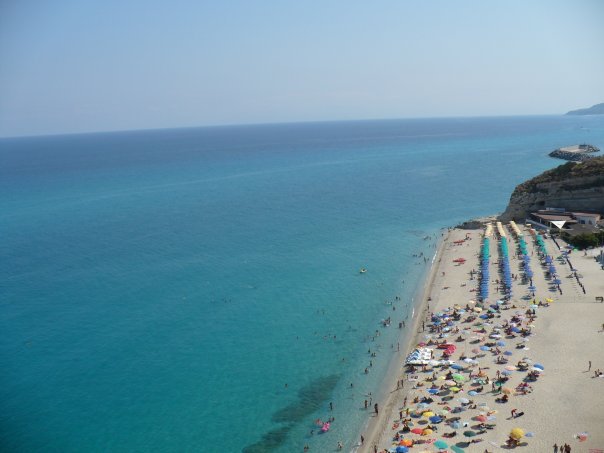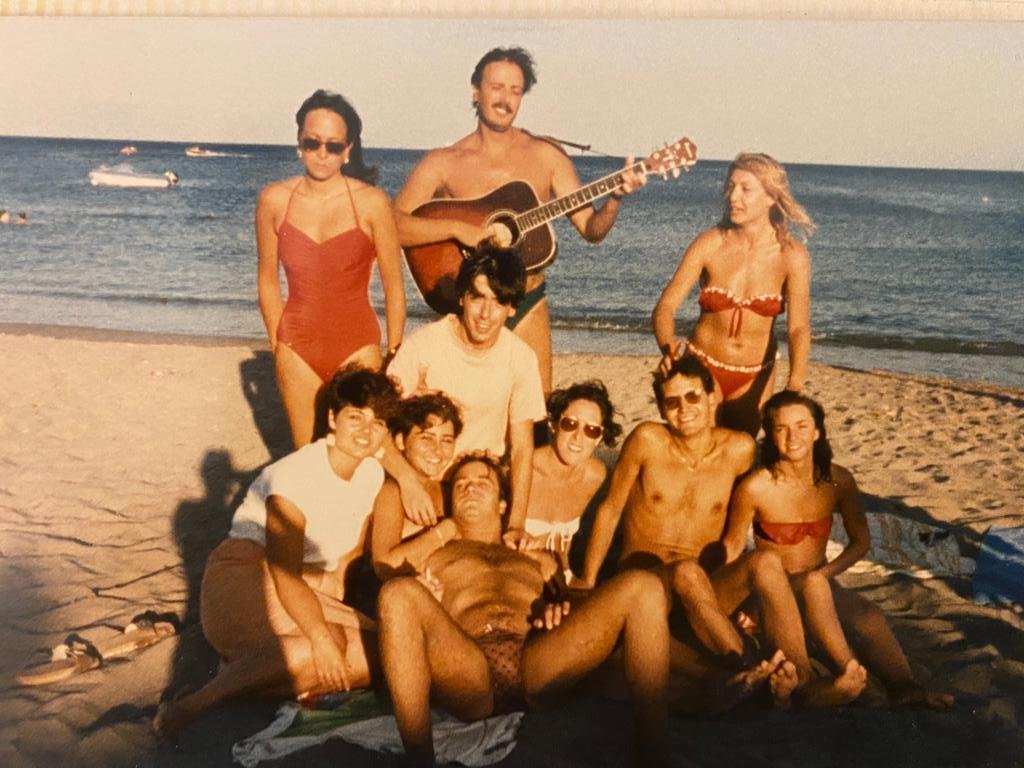A JOURNEY ALONG CALABRIA’S COASTLINE REVEALS ONE SEASIDE HAVEN AFTER ANOTHER
TYRRHENIAN SEA
The Citron Coast-La Riviera dei Cedri
Top Left: Isola di Dino, Arcomagno, Top Right: Diamante; Bottom Left: Isola di Dino Tower, Bottom Right: Arcomagno
Named after the citron, a large citrus fruit which grows locally in the area, the Citron Coast encompasses about 80 kilometres of charming seaside villages from Tortora to Paola in the Upper Tyrrhenian. While Praia a Mare may be the first popular beach town you encounter, there is a unique small cove just a little south of there where the rocks and crystal-clear sea will take your breath away. Arcomagno beach, at San Nicola Arcella, in the province of Cosenza is a jewel guarded between the two more famous destinations, Scalea and Praia a Mare. It is a small sandy beach mixed with gravel, and two picture-perfect rocky cliffs that frame the entire inlet enveloped in brilliant turquoise water. When in the area, be sure to visit Dino island, one of two islands in Calabria (the other is Cirella Island near Diamante), a rich biodiversity with countless sculptural caves and creeks. There is a stunning blue grotto, which is the largest on Dino Island, offering you a magical slice of Capri without the crowds.
The Coast of the Gods-La Costa degli Dei
You can’t talk about the Coast of the Gods without mentioning its protagonist, Tropea. Internationally, it is probably the most well-known beach in Calabria, and with good reason.
Its crystalline waters, white sand, charming and bustling historic centre, inspiring panoramas, and close proximity to the splendid Aeolian Islands are amongst the many reasons tourists return here every year. Tropea’s position high on the cliffs make the views dramatic, and you will get a workout getting to and from the beach as you are either descending or climbing a substantial amount. But this spectacular setting and inviting clear blue water is worth the trek every time. And don’t stop there. Peel the onion—yes, I am referring to the famous Tropea onion—you are in the Coast of the Gods, a 55-kilometre stretch of coastline from Nicotera to Pizzo Calabro in the province of Vibo Valentia, which seems like it was hand painted by the Gods. Add Pizzo, home of the famed tartufo, and Capo Vaticano to your list. If snorkelling is your thing, then make your way over to Marinella di Zambrone, dubbed a “Diver’s Paradise”. Be sure to bring your water shoes, since the sea bottom is a mix of sand and rocks though the views are breathtaking.
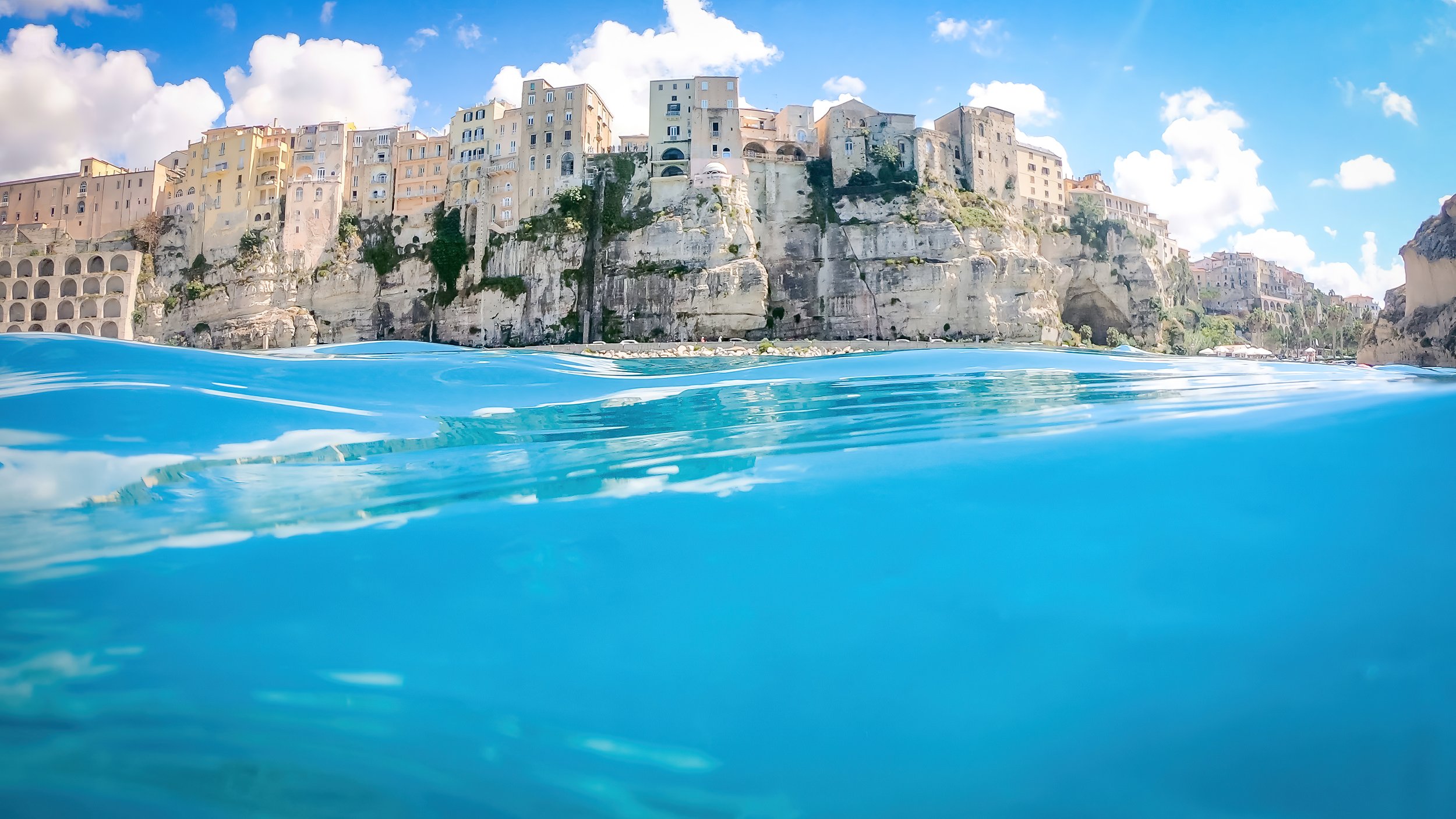
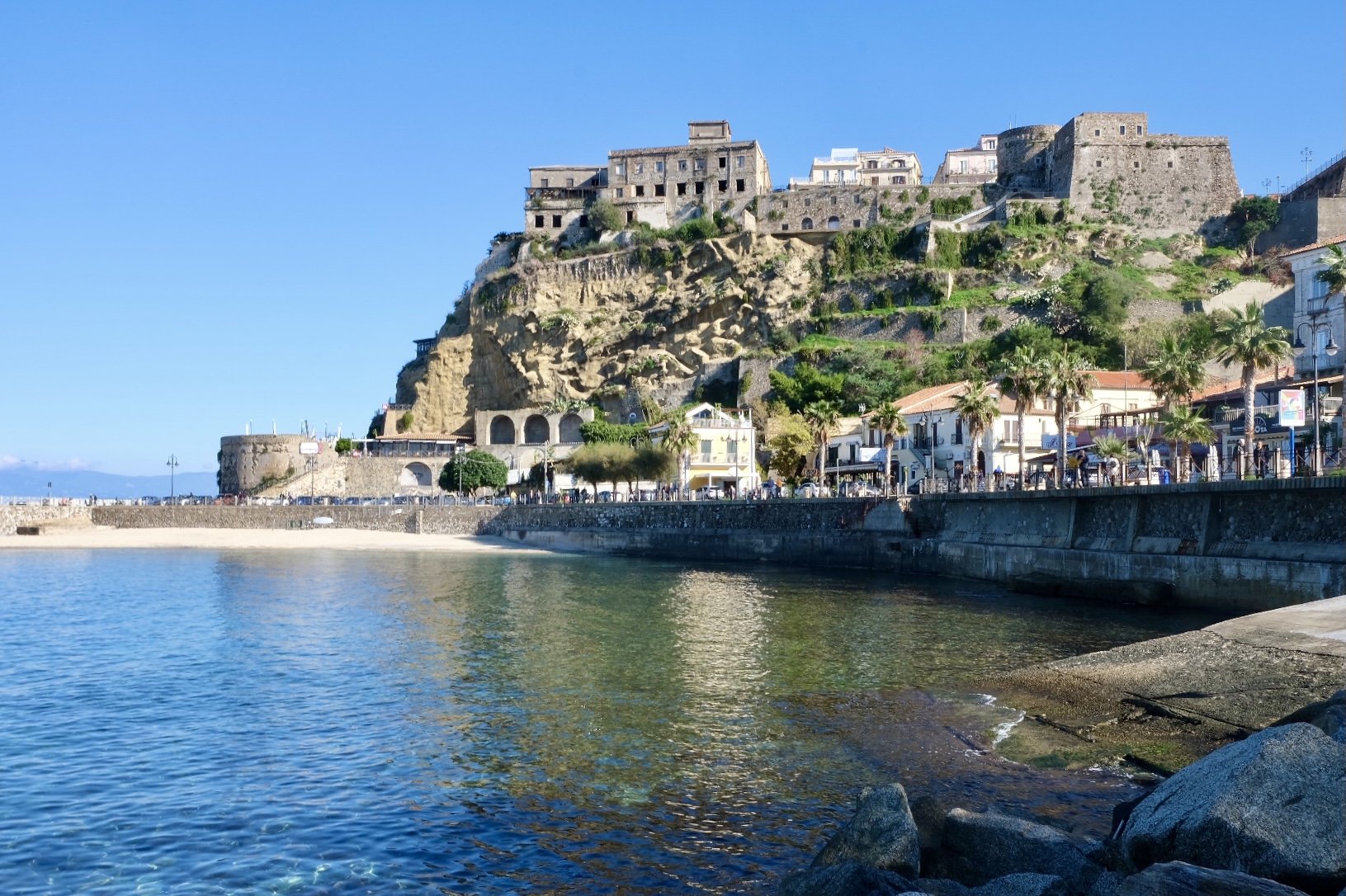
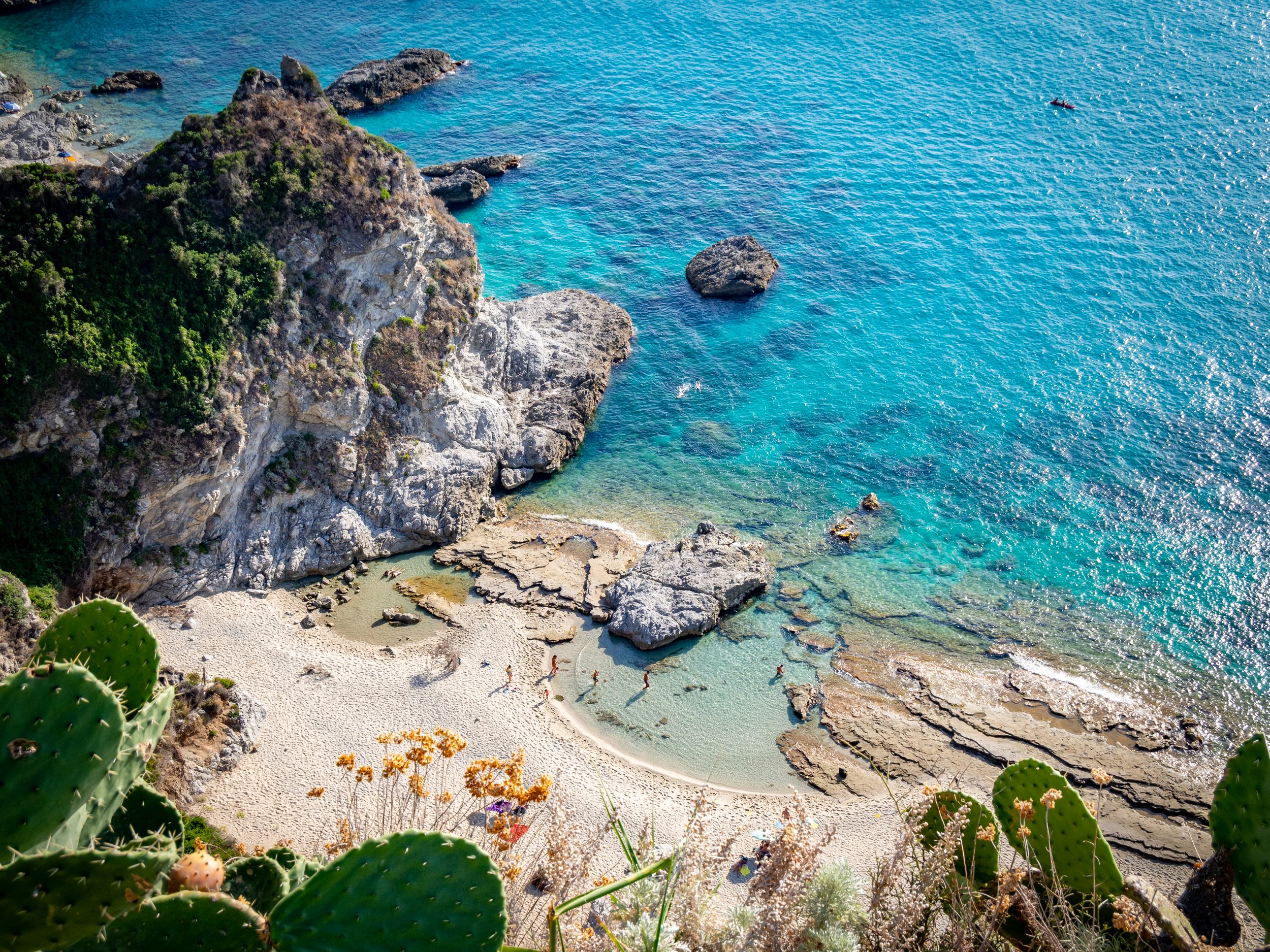
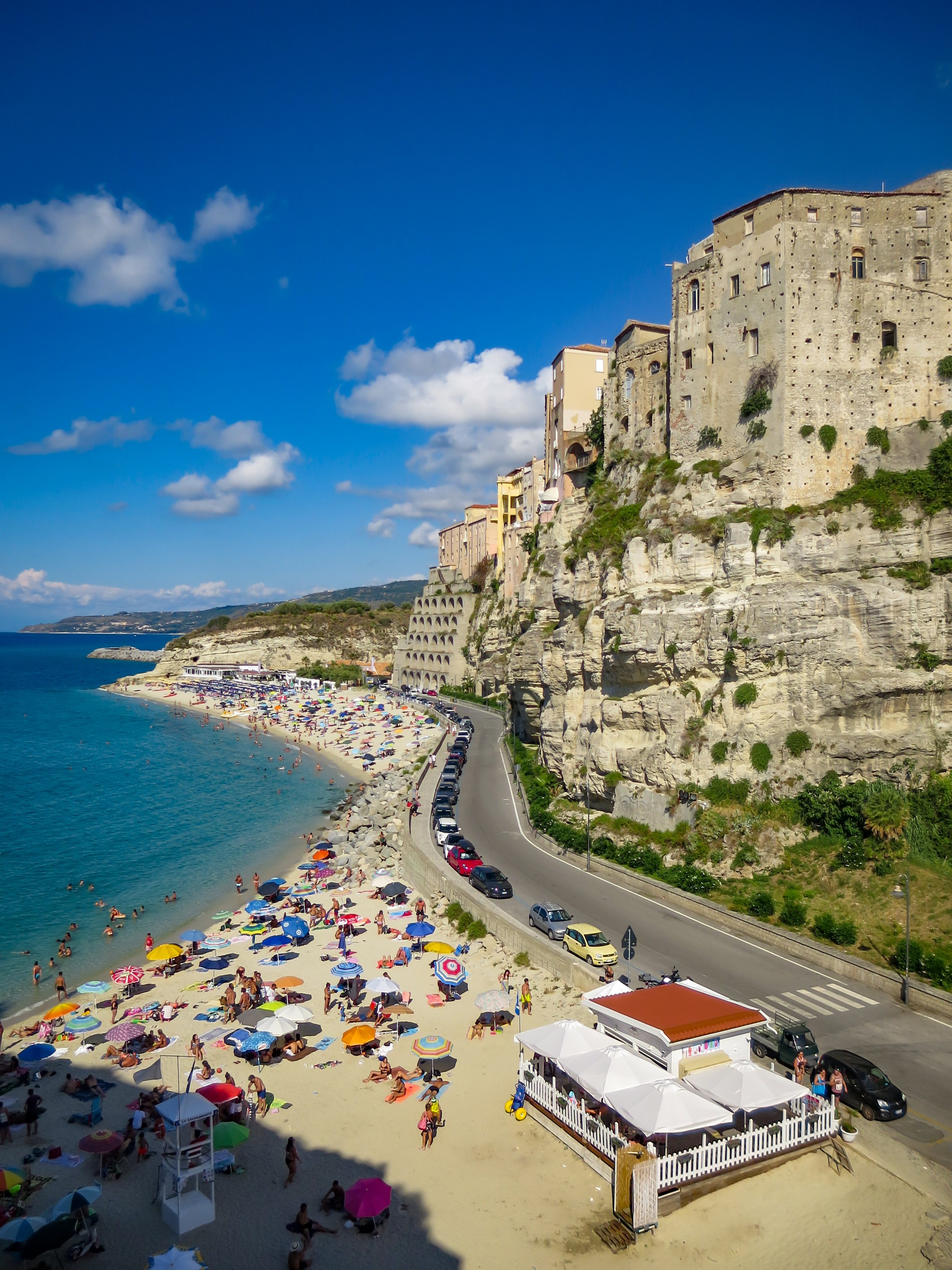
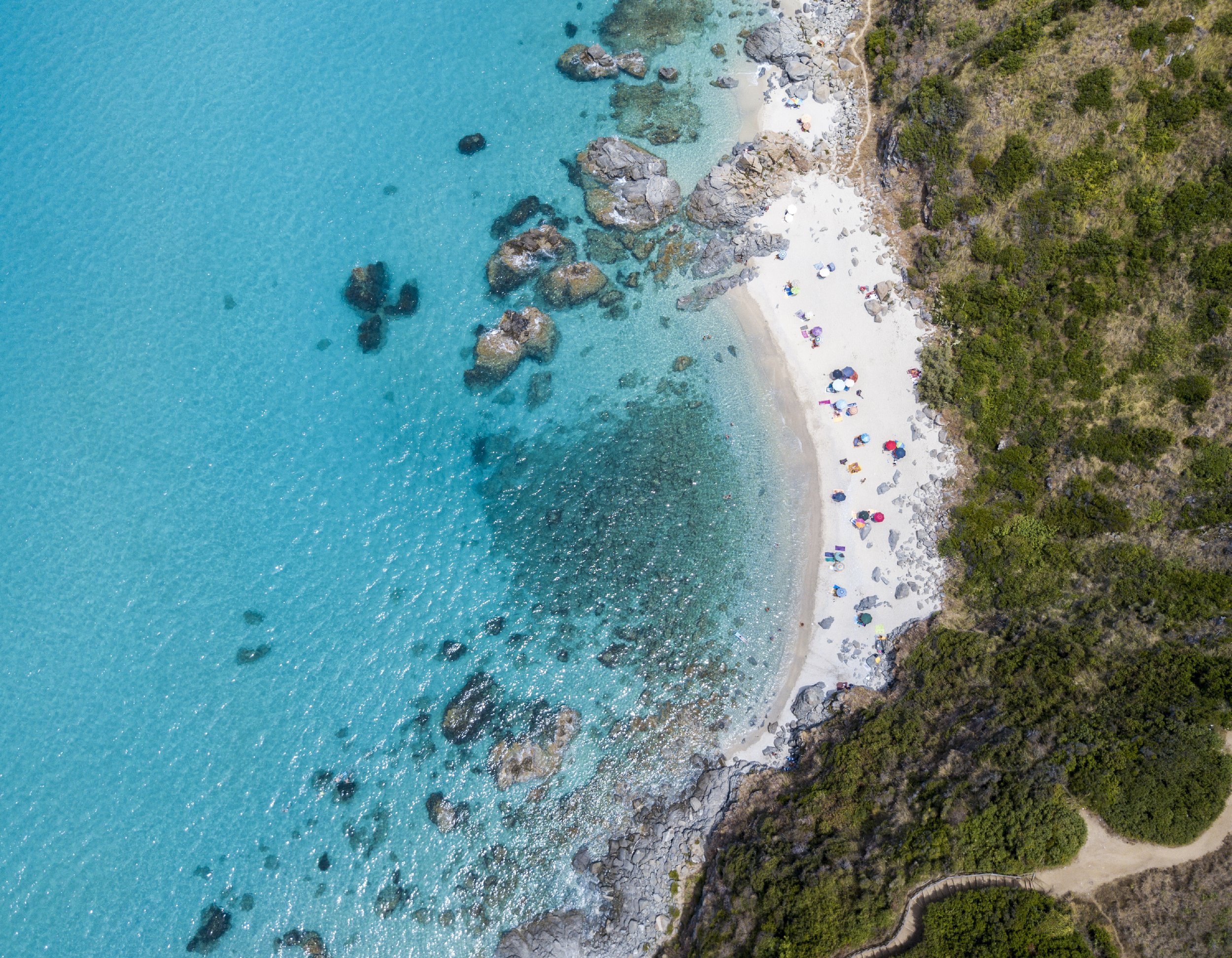
You know you’re in Calabria when…some of the local specialties
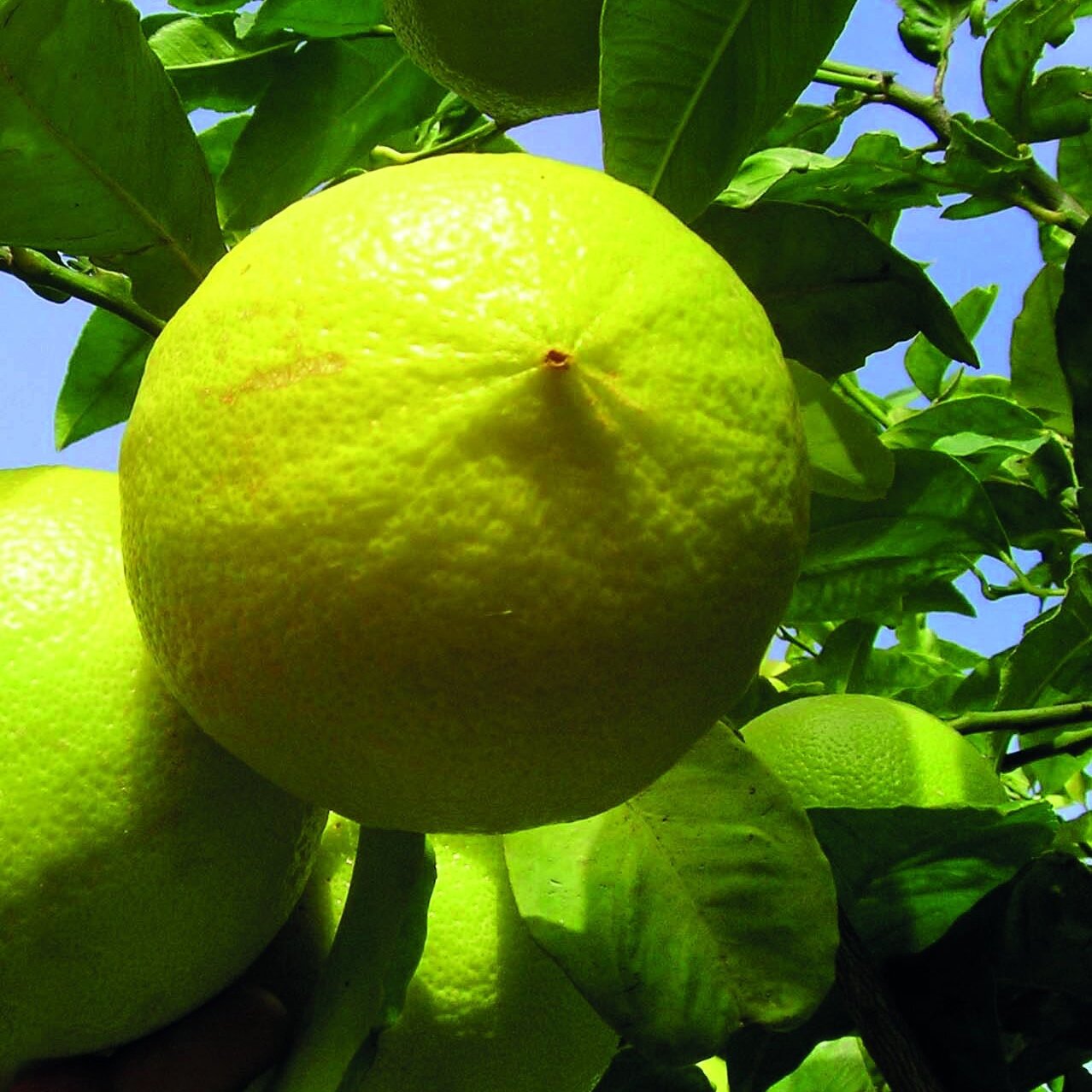
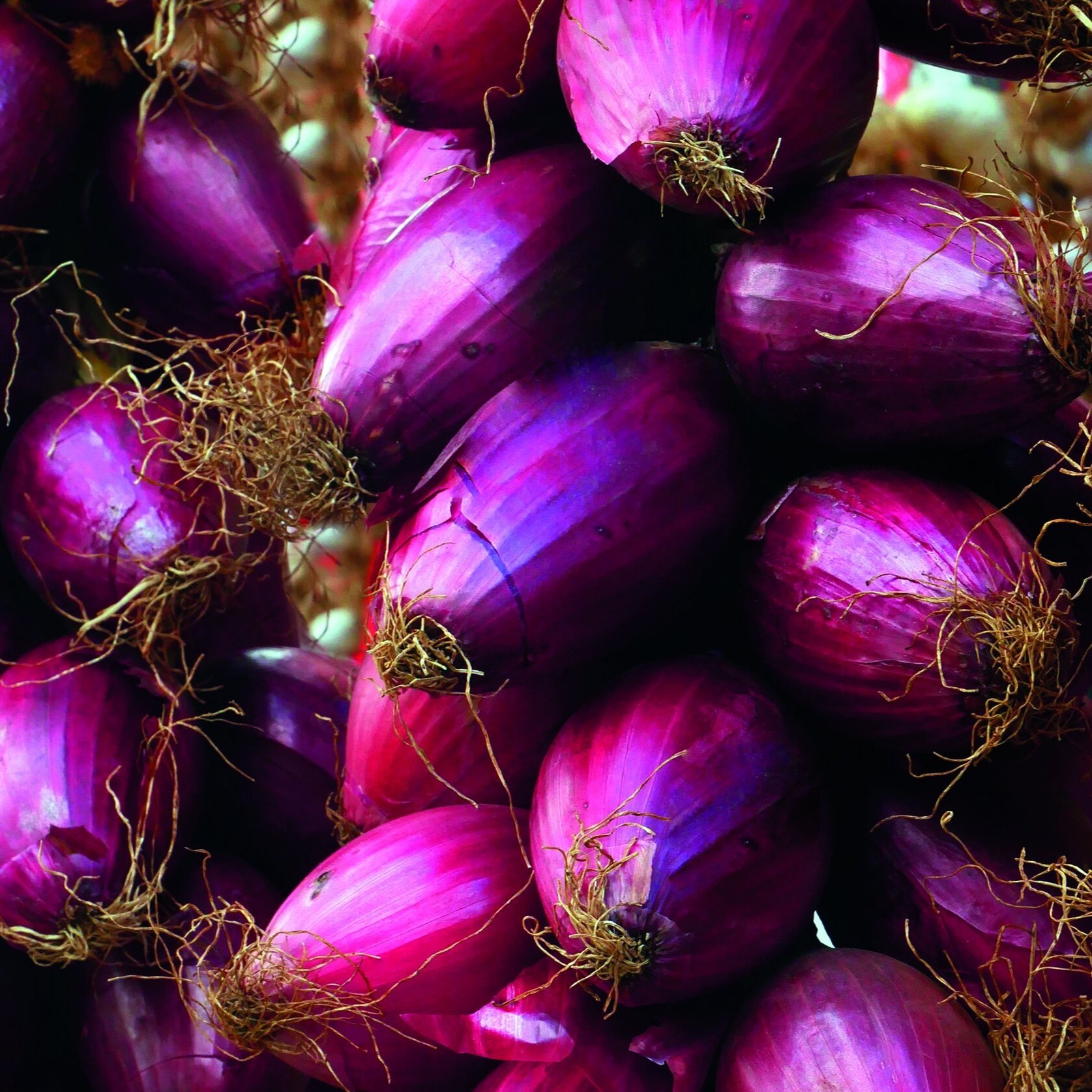
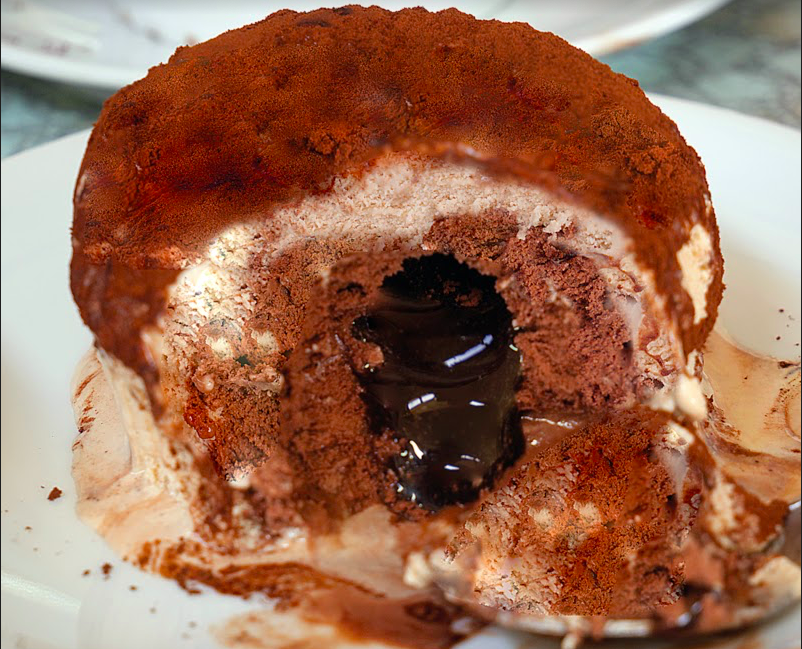
The Violet Coast-La Costa Viola
The Violet Coast winds down the west coast of Calabria stretching 35 kilometres from Palmi to San Giovanni. This section of shoreline is within the Reggio Calabria province and is characterised by its dramatic rocky coastline and deep blue sea. At certain points in the day, the viola-like reflections in the water give the coast its name. Coined the “Pearl of the Violet Coast”, Scilla arguably has the best beach. It is wide and is spectacularly positioned right in front of the Castello Ruffo, which overlooks the Strait of Messina. There are private lidos if you’d like a sunbed, or areas free to the public such as Marina Grande, also known as “Siren Beach”. The beach isn’t fine sand; small grain pebbles keep the water crystal clear. The Chianalea district, where the houses are built right up to the water, has given Scilla the nickname, the “little Venice of the South” in addition to its distinction as one of i borghi più belli d’Italia. From Scilla, the list of things to see and do is long, as this fishing village is just 22 kilometers from Reggio Calabria, the region’s largest city where an excursion to see the famous Riace Bronzes, 2,500-year-old life-size statues, in their home at the Archeological Museum is a must once you dry off and get out of your swimsuit to pursue more cultural experiences.
Looping over to the other side, the east coast has retained a more natural setting, the sea is deeper and saltier than the Tyrrhenian and the coast is blessed with beautiful bays and wide beaches.
IONIAN SEA
The Jasmine Coast-La Costa dei Gelsomini
One of the wildest coastlines, steeped in history, the magnificent Costa dei Gelsomini winds through 90 kilometres of the Province of Reggio Calabria, making it the longest and most varied coast in Calabria. The coast takes its name from the cultivation of the fragrant climber plant, rather diffuse throughout the territory. Bays with low, sandy beaches alternate with high and jagged cliffs. Meanwhile, all of it is surrounded by green, citrus and olive-covered hills, all the way to the Parco Nazionale dell’Aspromonte. With 42 municipalities, mostly all seaside towns to choose from, we are planting our ombrellone in the touristic hub of Roccella Ionica, a repeat winner of both Green and Blue Flags. This unspoiled area offers a multitude of beach services, a well-organized tourist port, and an evocative landscape blessed by nature and history. The 14th century Karafa Castle towers over the town built on a cliff 104 metres above sea level. From the beach, there is a promenade that extends to the medieval fortress, where you can take in the spectacular panoramic view. And if you need another reason to go, jazz lovers head to this beautiful town of 6,000 inhabitants for its famed 10-day jazz Festival in late August. It is one of the major jazz events in Europe, now entering its 41st edition this year.
Roccella Ionica, Calabria. The Carafa Castle sits atop a cliff overlooking the captivating Ionian Sea.
At Calabria’s toe is the coastal city of Reggio, which overlooks the Tyrrhenian Sea to the west and the Ionian Sea to the east. Here is a beach in Reggio with a view of the Strait of Messina
The Orange Coast-Costa degli Aranci
Moving north to the province of Catanzaro, an 80-kilometre stretch from Badolato to Magliacane, and you’re in the marvellous Orange Coast, the name is self-explanatory. This area is characterized by luxuriant hills and granite promontories that slope downward towards the sea and create fine-sand beaches and sea stacks dotted with grottos. The spotlight here is on the pearl of the Ionian, otherwise known as Copanello—a small, picturesque beach, surrounded by a sea with various shades of turquoise and soft sand, sometimes white, sometimes golden. It is set between two cliffs in a natural bay full of caves, archaeological remains and inlets. It has a warm and shallow sea, ideal for bathing and swimming and also for those who want to try their hand at snorkeling or diving. There are numerous resorts, bars and restaurants, but do venture out and spend some beach time at Montepaone Lido and Carminia. With over two kilometers of coastline, it is lapped by a crystal clear and uncontaminated sea. I spent a week here and saw dolphins a few times from my sunbed. The sunrise on the Ionian is an unforgettable view that will start your day in an awe-inspiring and serene way.

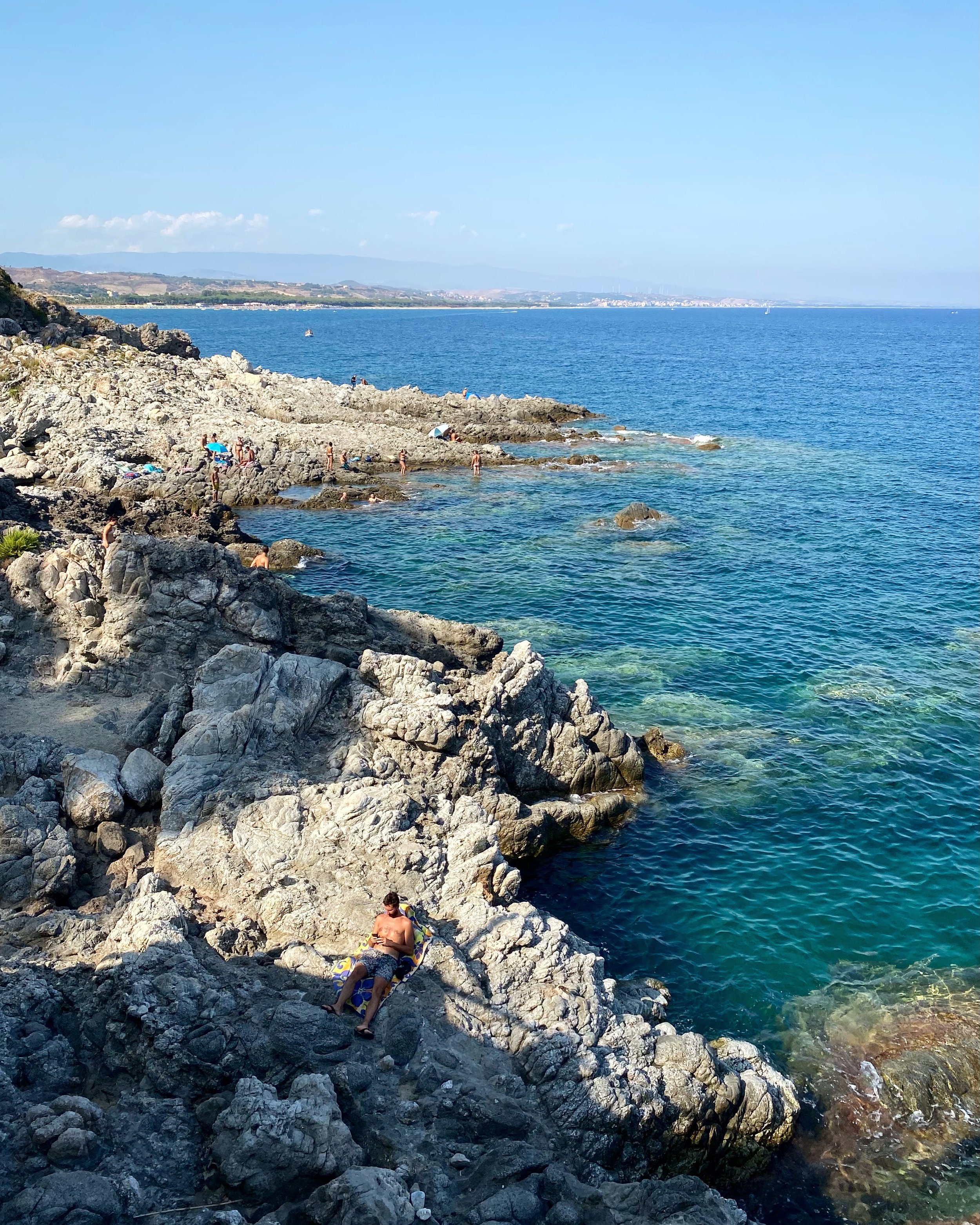

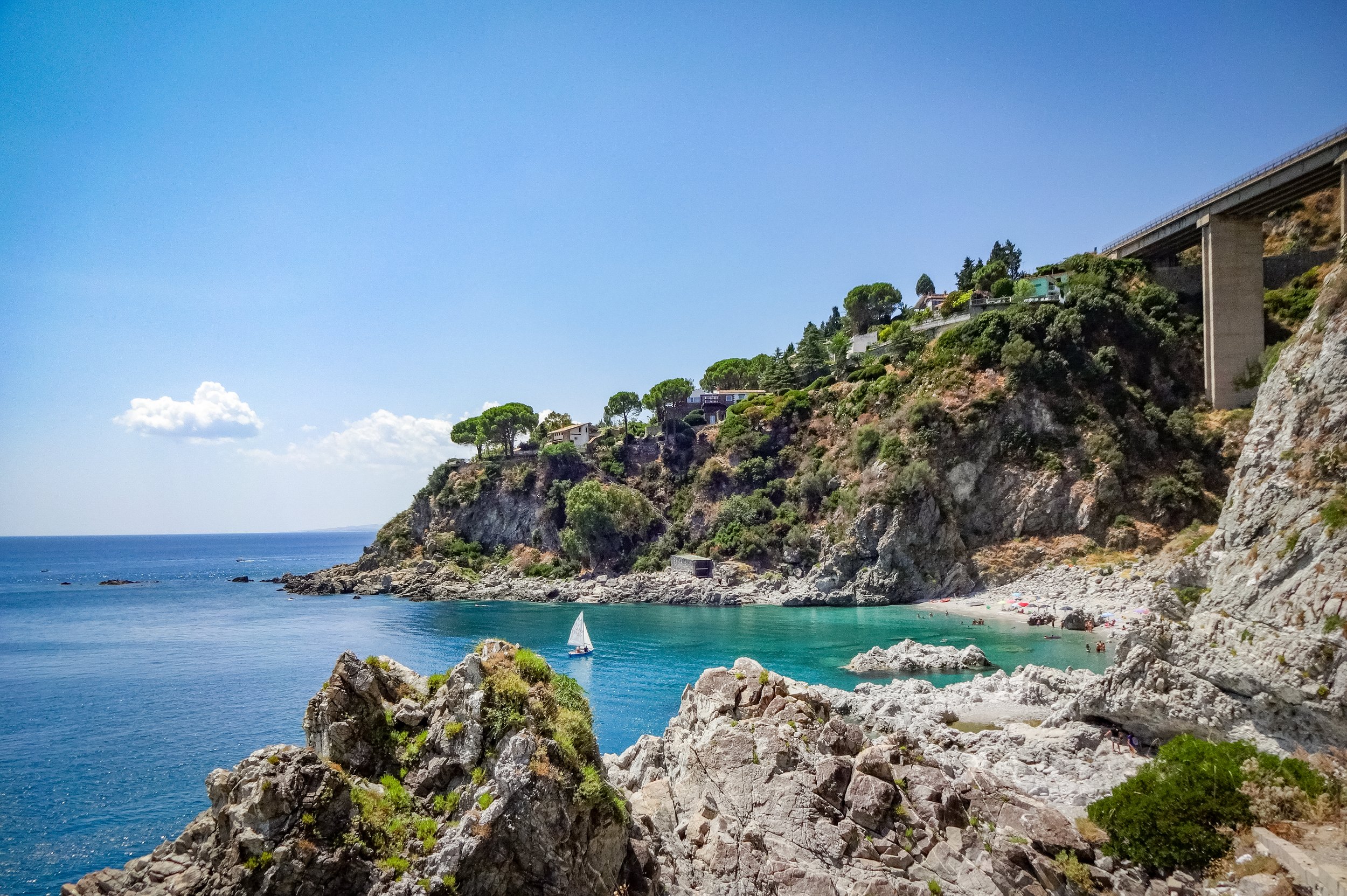
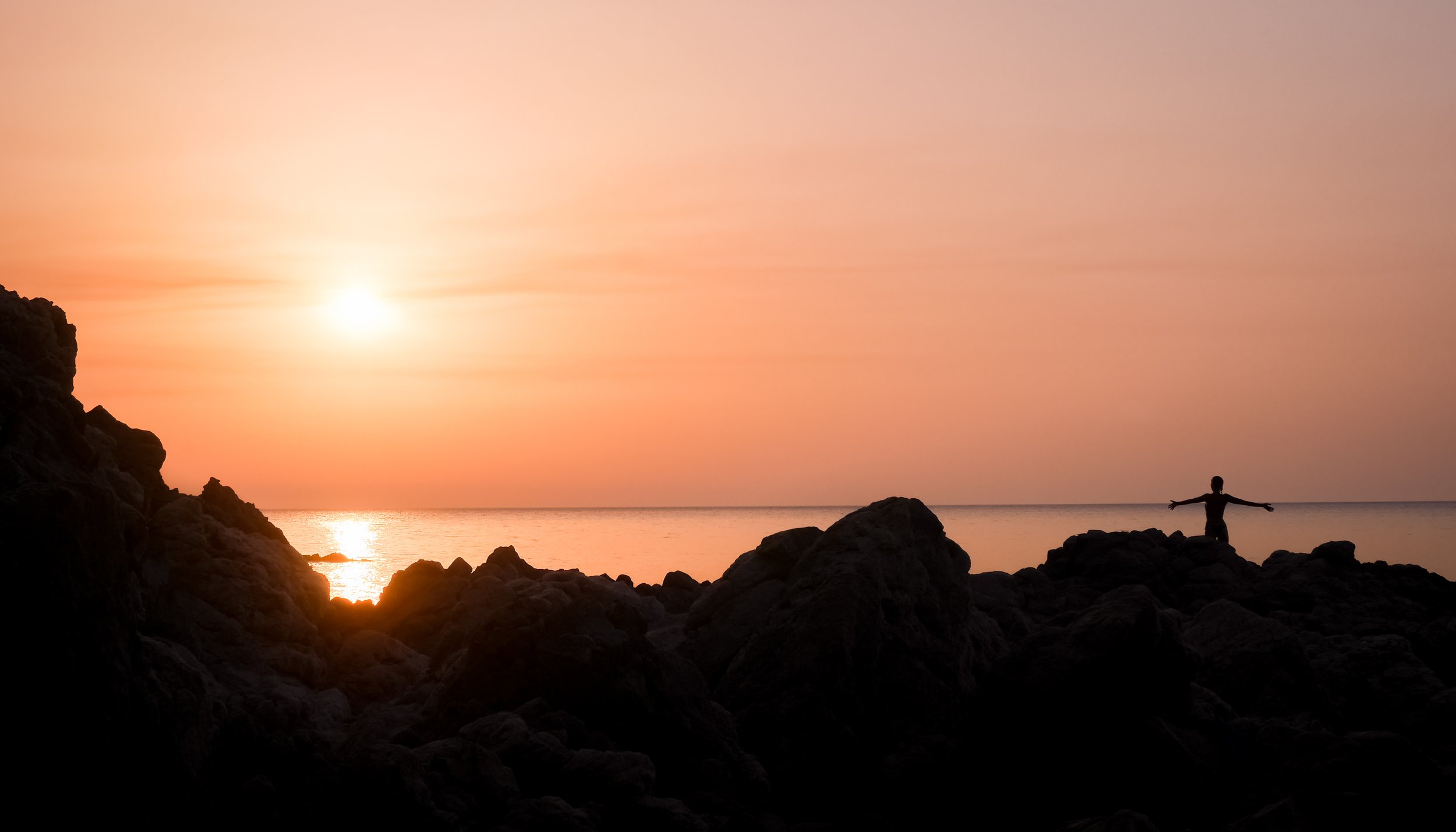

The Saracens Coast-La Costa dei Saraceni
In the Upper Ionian Sea, in the province of Crotone along the Costa dei Saraceni, (amongst the many invasions in Calabria, the Saracens left their mark), the beach of Isola di Capo Rizzuto is one of the first beaches I ever went to in Calabria. To this day, it holds a special place in my memories of exceptional beach vacations. Here, the presence of the Magna Grecia is pervasive, and the surroundings seem wilder and more natural. The landscape is made up of cliffs, luxuriant vegetation as well as the remains of Greek walls. The beautiful light blue and emerald green waters of the province’s Marine Protected Area of Capo Rizzuto is the most extensive in all of Italy, with 36 kilometres of coast. Filled with Posedonia meadows on the sea floor, it is the lung of the Mediterranean. Capo Rizzuto shores are narrow, long and consist of light sandy beaches with fine grains. It has repeatedly won the Green Flag (awarded by Italian pediatricians to beaches suitable for families with children). Just this year, it has been awarded the Blue Flag from FEE. There are two ancient sites by the sea not to be missed: the medieval site of Le Castella, 10 kilometres from Isola Capo Rizzuto, and the Archaeological Park of Capo Colonna, 10 kilometres south of Crotone.
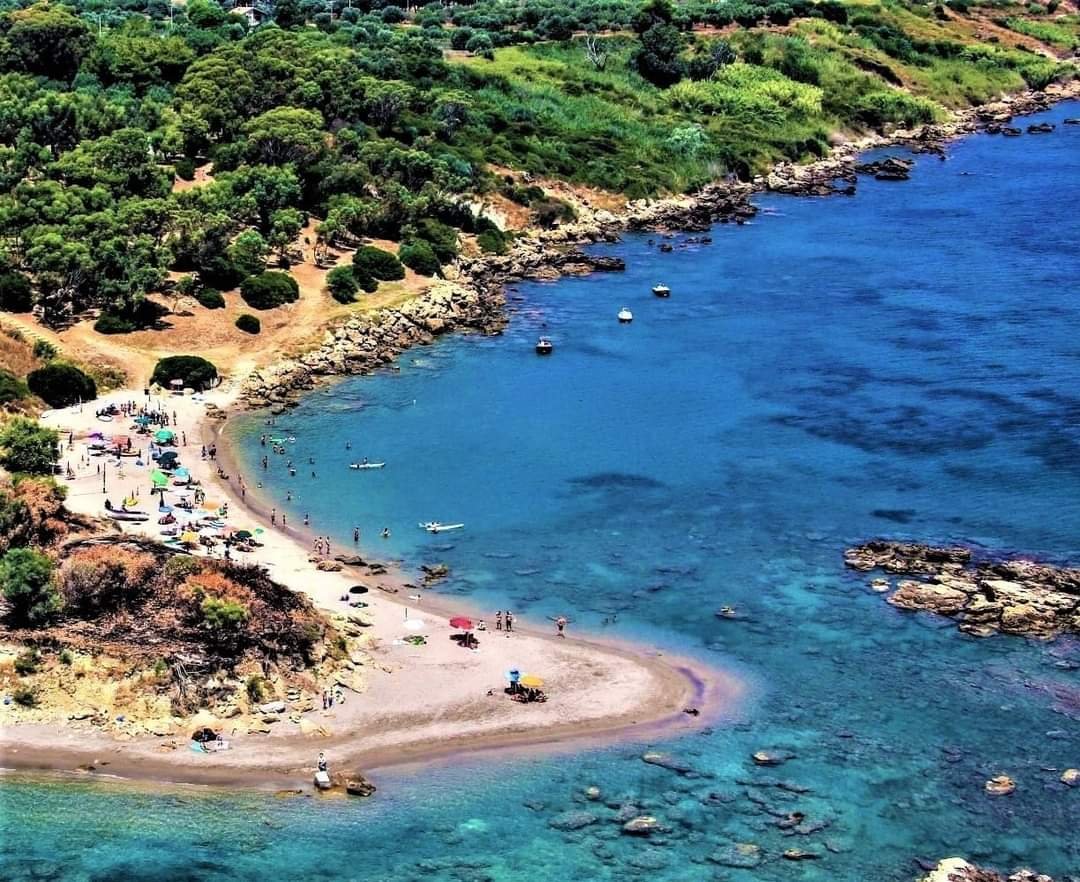
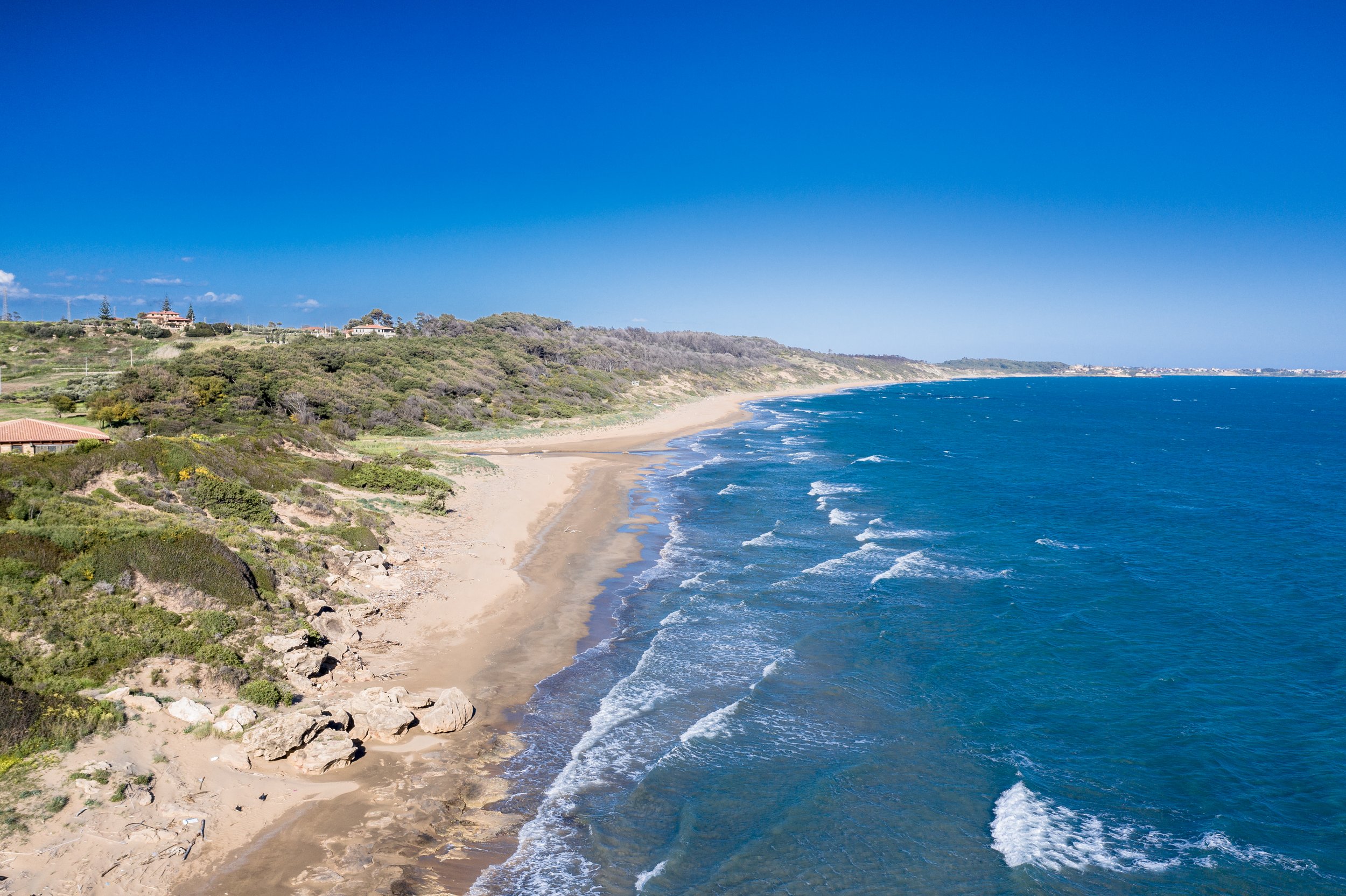
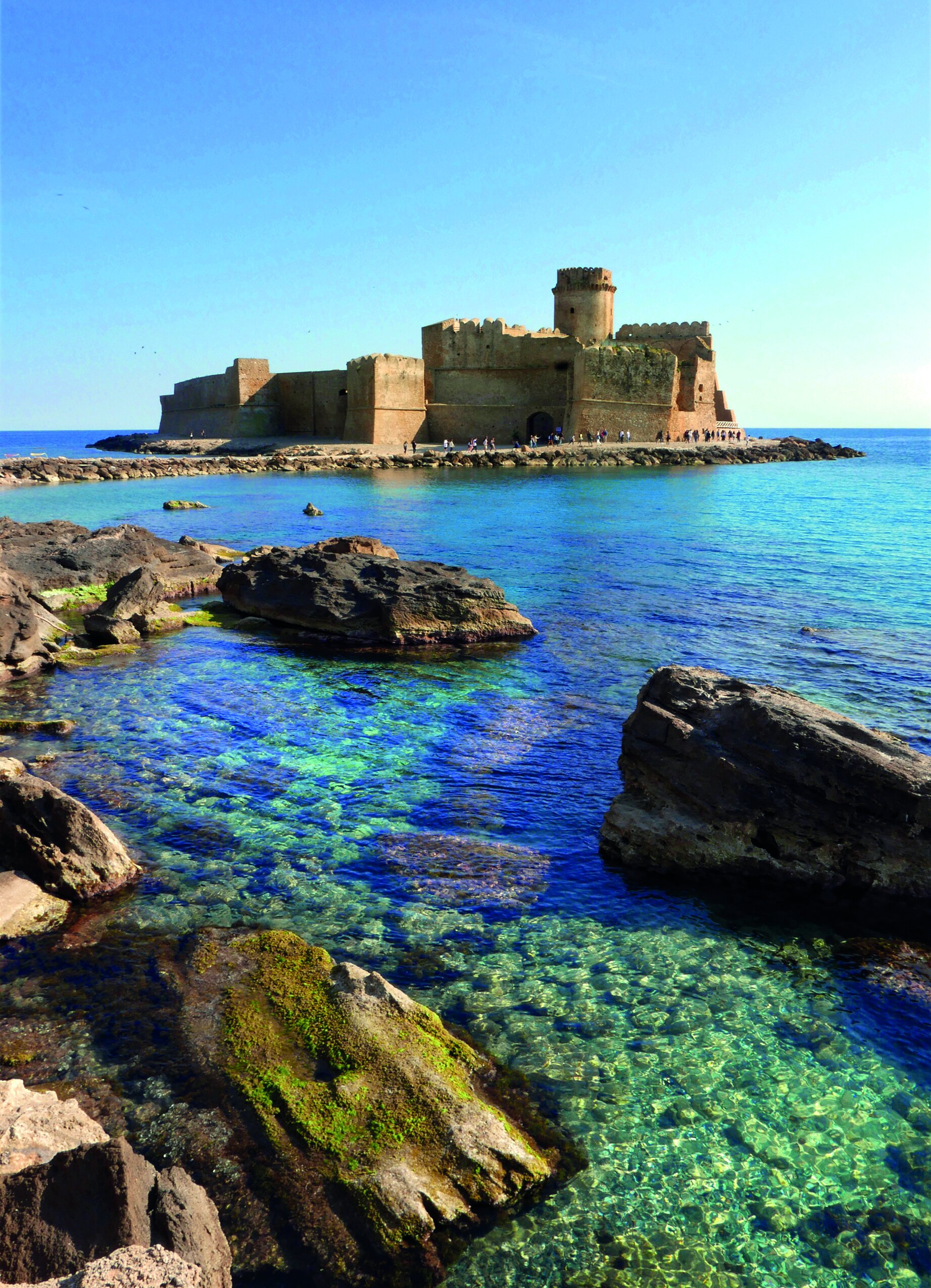
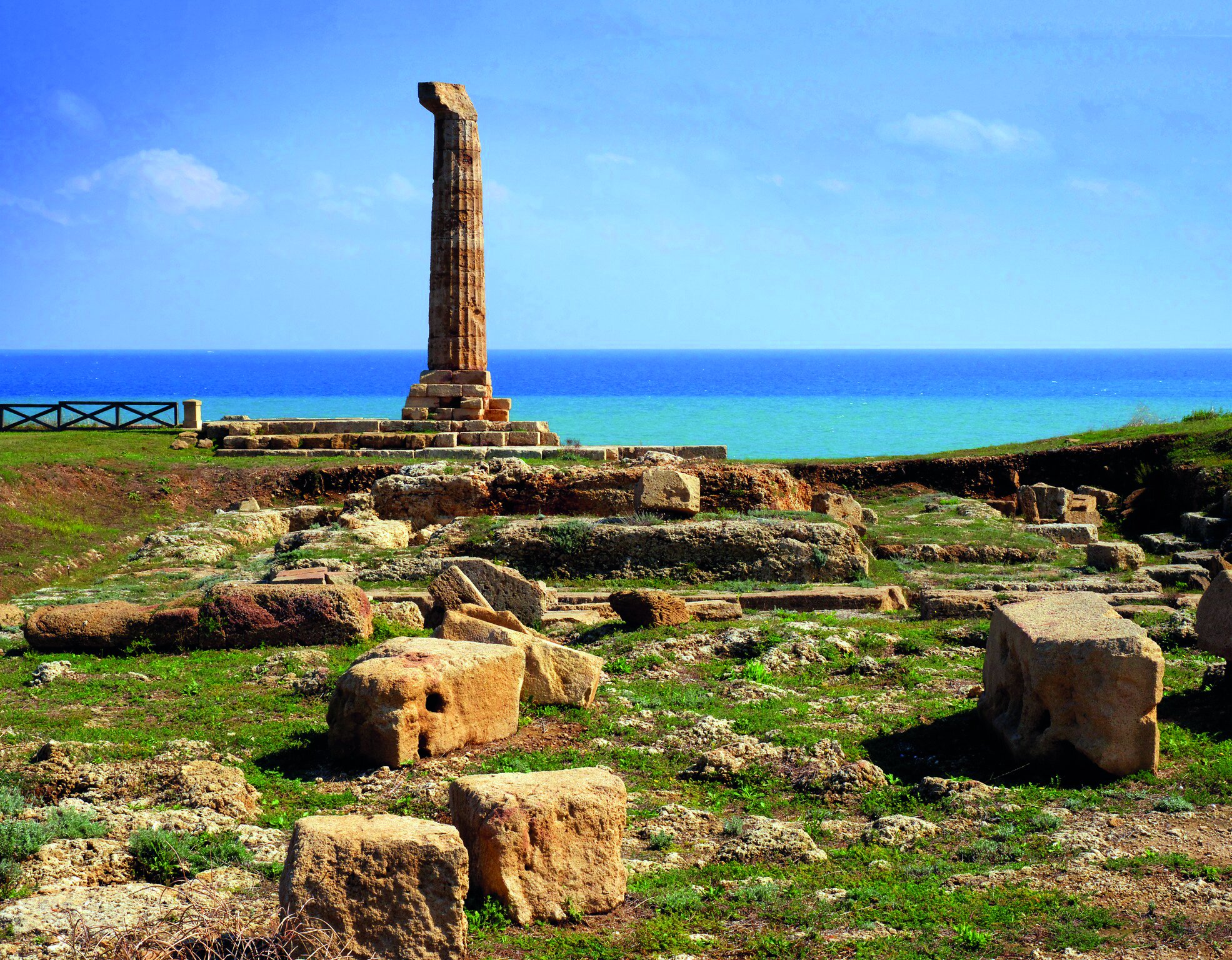
TORN BETWEEN TWO COASTS
My favourite beach? I couldn’t narrow it down to one so I decided to choose one from each Calabrian coast—Tropea, on the Tyrrhenian and Capo Rizzuto on the Ionian. I was gobsmacked by Tropea’s beauty at first sight, from the iconic Santa Maria dell’isola perched on the dramatic promontory, the bustling historic centre, there were many pinch-me moments throughout my stay. While sunbathing on the beach, I felt like I was in a dream every time I opened my eyes to look around at those incredible views—not to mention the divine feeling of splashing around in that clear, sparkling blue sea that wins the Medaglia d’oro time and time again).
Capo Rizzuto on the Ionian side was the go-to beach of my ‘20s—beach days and nights filled with friends, music, guitar playing, singing by the campfire under a star-filled night sky, long lunches and afternoon naps, fresh catch-of-the-day dinners and dancing at clubs seaside into the wee hours. Who doesn’t love those memories? Overall a more rustic feel on the Ionian, my first encounter with the Magna Grecia and the postcard views are ingrained in my heart.
My favourite beaches and some fun retro pics
Calabria is more than just spectacular beaches… the people, food and vistas, there is a whole world to discover. Go to Calabria Straordinaria for more information.
PHOTO CREDITS: SHUTTERSTOCK, UNSPLASH, TOURISM OFFICE OF CALABRIA, MY PERSONAL COLLECTION
Banner image: Soverato Beach, province of Catanzaro. Photo courtesy of Straordinaria Calabria


